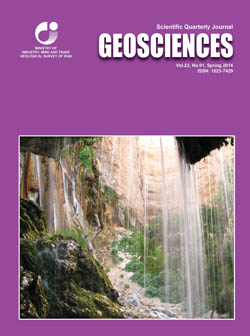Document Type : Original Research Paper
Authors
1 Assistant Professor, Payam-e-Nour University, Zangi Abad Branch, Kerman, Iran
2 Assistant Professor, Department of Ecology, Institute of Sciences, High Technology and Environmental Sciences, Graduated University of Advanced Technology, Kerman, Iran
3 Professor, Kerman Institute of Higher Education, Kerman, Iran
Abstract
The Guri limestone member of the Mishan formation in SE of Zagros Basin (N of Bandar-e-Abbas) consists of the thick bedded limestone bearing oyster shells. Seven species of Ostreidae and Gryphaeidae belonging to four genera of Crassostrea, Cubitostrea, Ostrea and Hyotissa were identified as: Cubitostrea frondosa, Ostrea (cubitostrea) dubertreti, Cubitostrea digitalina, Crassostrea gryphoides, Hyotissa virleti, Ostrea vesitata and Ostrea plicatula. These fossils are reported from the Zagros Basin for the first time. These deposits assign to a Burdigalian age based on the presence of Borelis melo curdica. The reclining mode of life, adjacent right and left valves and rare erosion traces on shells indicate an in situ buried in hyper saline shallow and near shore water with moderate to low sedimentation rate. The early Miocene oyster assemblages similar to this studied assemblage have been reported from the other parts of Tethys showing a seaway connected to Tethys during the early Miocene. Therefore, the oysters can be used for the Paleogeographical correlation in the early Miocene deposits.
Keywords

